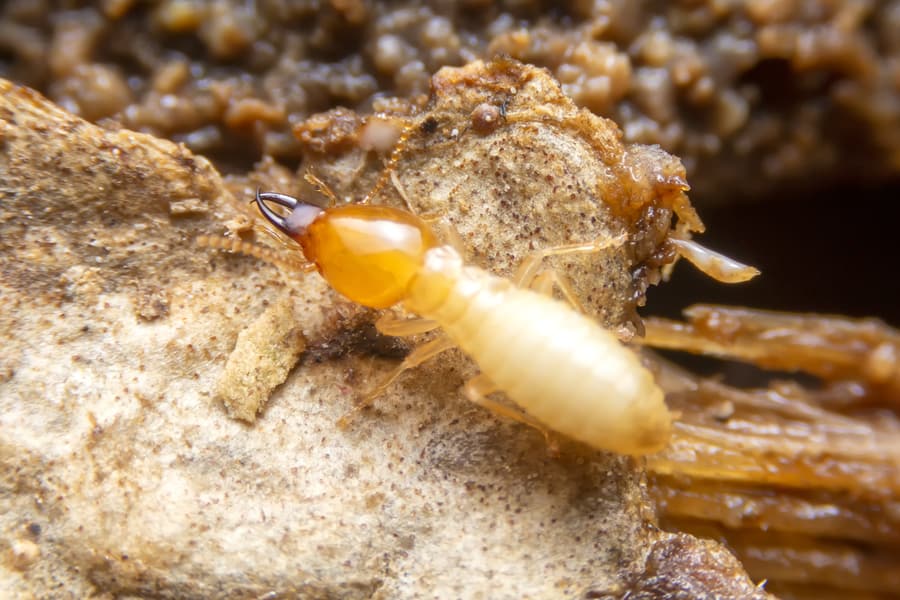Subterranean termites eat wood from the inside out, often hiding and going undetected until severe damage is done. These termites will often infest homes by entering through stucco, slab foundation, and other hidden areas with access to the structure. The best way to prevent these termites is to understand their signs of infestation so you can begin to eliminate them early before the infestation gets out of hand.
Termite Signs in Homes
Here are 5 signs of subterranean termites in homes:
- Swarms: An early sign that subterraneans are in your home is spotting termite swarms in your neighborhood. These swarms can sometimes be confused with flying ants. Swarms will typically emerge in the spring or early summer to reproduce and establish a new colony. If you see these swarms, it’s a good indicator that a colony is looking for a new place to build their nest.
- Mud Tubes: Subterranean termites build mud tubes to travel back and forth between your home and their nest. You’ll find these on walls, ceilings, floors, exterior surfaces, on the sides of slabs, and are usually the size of a pencil. These tubes help protect them from damage and predators, also allowing them to accumulate moisture to survive.
- Noises: While it can be difficult to hear termite noises, it is possible! If a colony is large and established, you could hear a faint clicking or knocking sound behind your wall or in other voids. This noise is the sounds soldier termites make when they are banging their heads against wood or vibrating their bodies to indicate to the rest of their colony that there is danger.
- Hollow Wood: If you tap on wooden surfaces of your home and hear a hollow or paper sound instead of a solid thud, this is a sign that a termite colony could be established. Additionally, if you spot blistering or bubbling paint, especially near the window and door trim, could be another indication termites are inside.
- Wood Damage: Floor, door, and window damage can indicate that termites have infested. Typical termite wood damage includes floors that buckle or sag and difficulty closing doors or windows.
Consider Termite Treatments
If you notice any of the above signs in your Florida home, it’s best to contact your local termite control company as soon as possible. These professionals will thoroughly inspect your home, provide you with a termite treatment plan for the existing termite colony, and recommend the best prevention plan moving forward to avoid another infestation.
